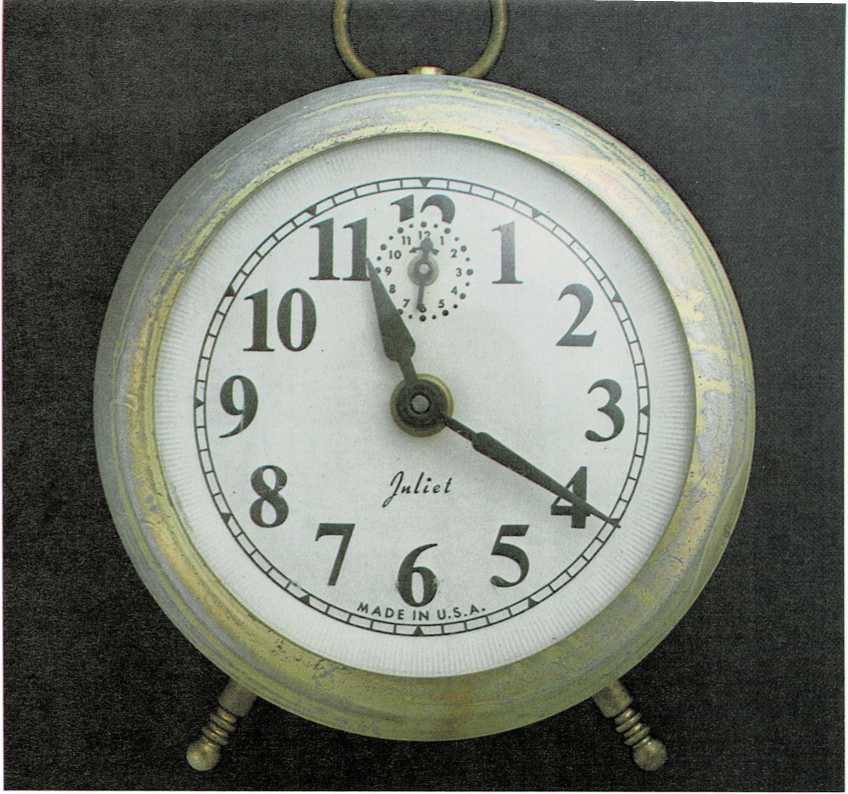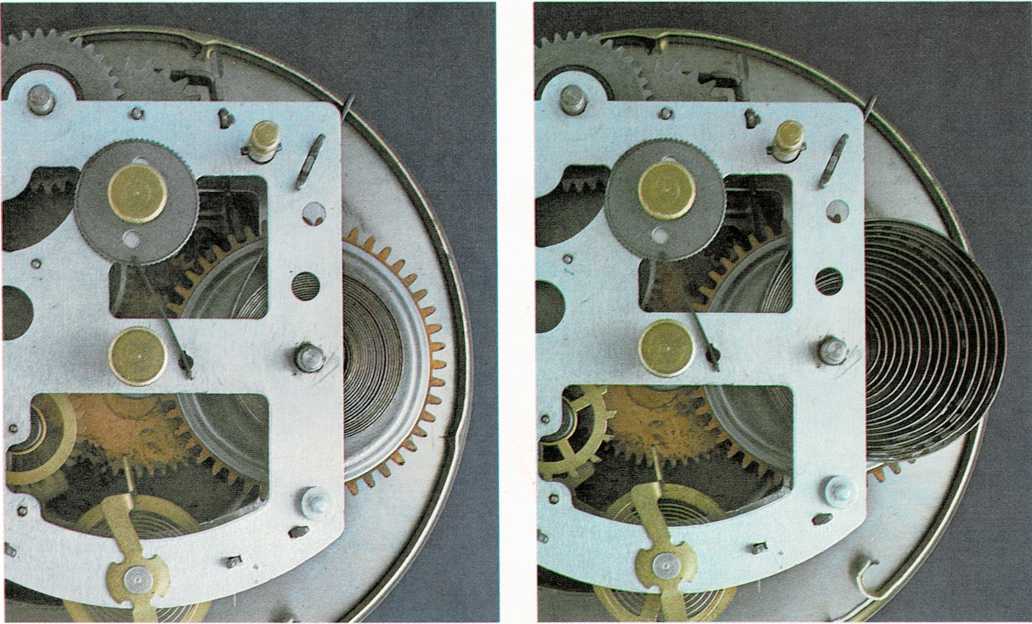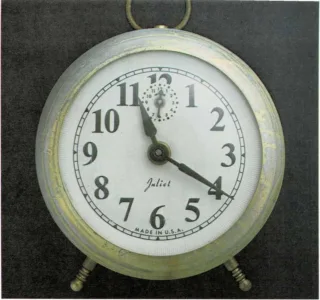
Putting machines to work
Turn the key at the back of the alarm clock once . . . twice . . . three
times. At first the key turns easily. But as you keep winding, the key
turns harder and harder. Finally the clock is wound as far as it will
go.
When you wind the clock, you turn a spring inside and make it coil up
tight. You give the coiled spring potential energy—stored-up energy
that will make the parts move.
The wound-up spring begins to uncoil a little at a time. Its energy is
used to turn a set of gears that move at different speeds. The gear for
the minute hand turns all the way around once every hour. The gear for
the hour hand moves much more slowly. It takes twelve hours to make a
single turn.
There is enough energy stored in the spring to keep the gears moving and
the clock hands turning for a whole day. At the end of the day, the
spring is uncoiled and loose. Then you wind it again—to store up more
energy to keep the clock running.
A wind-up clock runs on the energy stored in a tightly coiled spring
(left). As the spring unwinds, the clock ticks away. When the spring is
completely unwound (right), the clock stops.


